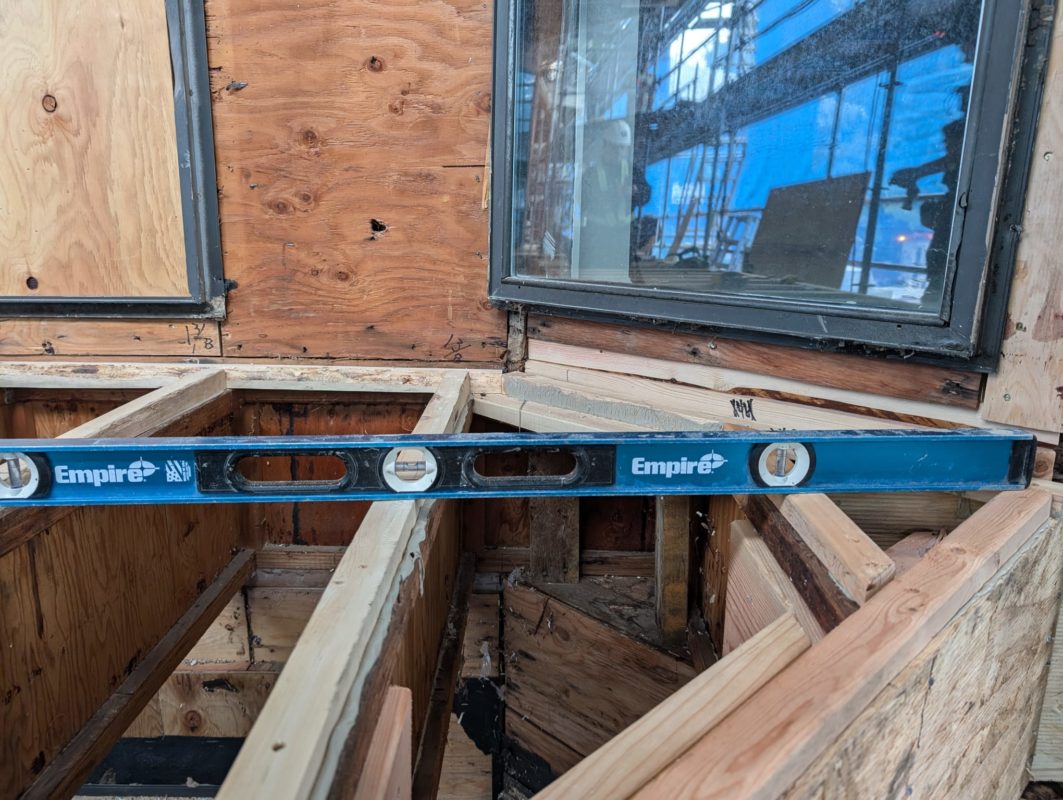The Excellent Restoration Process: From Rot Removal to Framing Perfection
When it comes to maintaining the integrity and value of your building, understanding the restoration process is essential. At Argenta Restoration, we believe that a successful restoration goes beyond mere repairs—it involves a meticulous approach to every stage of the project. From the initial rot removal to achieving framing perfection, each step is crucial in ensuring a durable and high-quality outcome. In this blog, we will guide you through our expert restoration process, showcasing how we transform deteriorated structures into resilient and beautiful spaces. Discover how our commitment to excellence in every phase of the restoration process sets us apart and ensures lasting results for your property.
Understanding Wood Rot
Causes of Wood Rot:
Wood rot is a significant issue in the restoration process, often resulting from various underlying problems. Common causes include excessive moisture, which can seep into wood through leaks, poor drainage, or high humidity. Pests like termites and carpenter ants can also contribute to wood rot by damaging the wood and allowing moisture to penetrate. Additionally, poor ventilation in areas such as basements or attics can trap moisture, creating an environment ripe for rot. Identifying these causes early is crucial in the restoration process to prevent further damage and ensure a successful restoration.

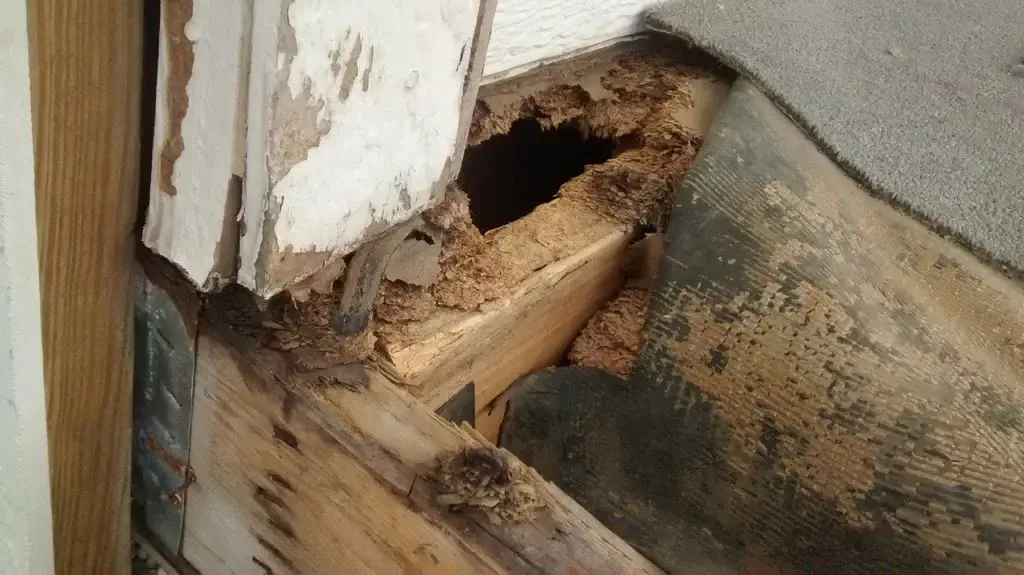
Identifying Rot:
Recognizing the signs of wood rot is essential for an effective restoration process. Look for discoloration, which often appears as dark or stained patches on the wood. The texture of rotting wood will change, becoming soft and spongy to the touch, and may even crumble when handled. Additionally, a musty odor can indicate the presence of mold and decay. Thorough inspection and early identification of these symptoms are key steps in the restoration process, allowing for timely intervention and treatment. You can read through “How to Identify and Treat Dry Rot & Wet Rot” to find more information on how to identify rot.
Impact of Neglect:
Ignoring wood rot can have severe consequences on the restoration process. As rot progresses, it weakens the structural integrity of the wood, leading to potential safety hazards such as collapses or compromised support. This neglect can also result in more extensive and costly repairs down the line. Addressing wood rot promptly and effectively is vital in the restoration process to ensure the safety and longevity of your structure.
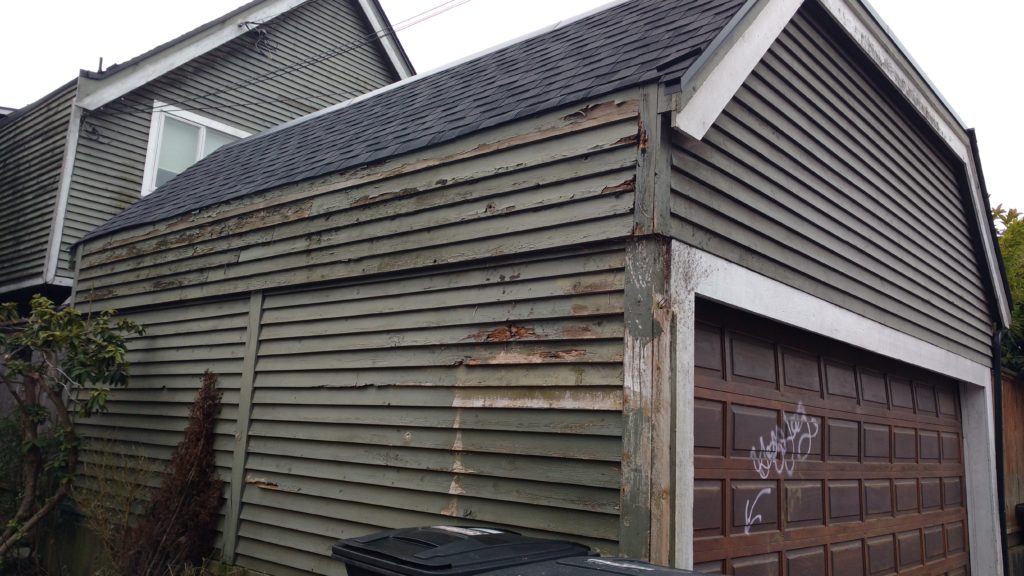
The Rot Removal Process
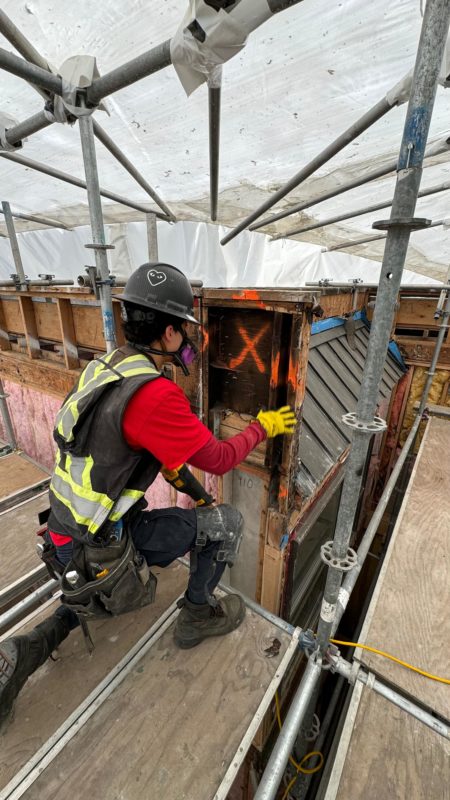
Inspection and Assessment:
The initial step in the restoration process is a comprehensive inspection and assessment of the building. This involves examining the affected areas to determine the extent of wood rot damage. Inspectors look for signs of decay, moisture infiltration, and structural weaknesses. Using tools such as moisture meters and visual inspections, they identify both visible and hidden damage. This thorough evaluation is crucial in creating an effective restoration plan and ensuring that all compromised wood is addressed.
Selective Demolition:
Selective demolition is a critical component of the restoration process. This technique involves carefully removing only the rotted or damaged wood while preserving the surrounding structure’s integrity. Skilled professionals use specialized tools and methods to extract the affected material without causing additional harm to the intact areas. This approach minimizes the impact on the building’s overall structure and helps maintain its stability while ensuring that all problematic wood is removed.
Disposal of Damaged Materials:
Proper disposal of damaged materials is essential in the restoration process to prevent further issues. Rotted wood and other debris should be removed and discarded following local regulations and best practices. This step is important to prevent the spread of mold, pests, and contaminants that could affect other areas of the building. Safe disposal not only protects the environment but also contributes to a healthier living or working space.
Preparing for Framing
Surface Preparation:
Preparing the site for new framing is a crucial step in the restoration process. This involves a thorough cleaning of the area to remove any remaining debris and damaged materials. The surface must be leveled to ensure stability and a solid foundation for the new framing. Any underlying issues, such as moisture problems or structural inconsistencies, should be addressed before proceeding. Ensuring that the base is clean, dry, and even is essential for the longevity and effectiveness of the new framing.

The Framing Process
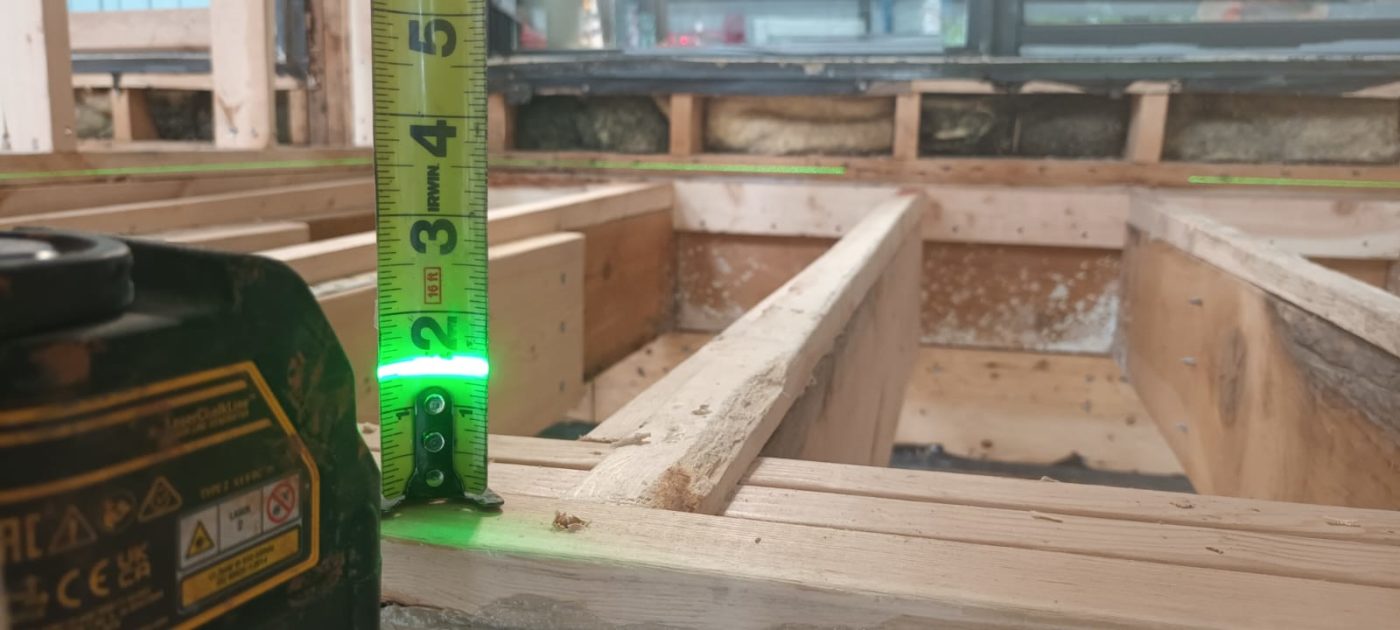
Precision in Framing:
Accuracy in measurements and cuts is crucial during the framing process. Each component of the frame must be precisely cut and positioned to ensure the structural stability of the building. Even slight inaccuracies can lead to misalignment or weaknesses in the framework, which can compromise the overall integrity of the structure. Careful attention to detail and adherence to specifications help to ensure that the framing provides a solid and reliable foundation for subsequent construction phases.
Safety Measures:
Safety is a top priority during the framing process. The crew follows strict safety protocols to protect both themselves and the structure. This includes securing the framing as it progresses to prevent collapse or shifting, using appropriate safety gear such as helmets and harnesses, and employing proper techniques to handle tools and materials. Regular safety checks and adherence to guidelines help to minimize risks and ensure a safe working environment.
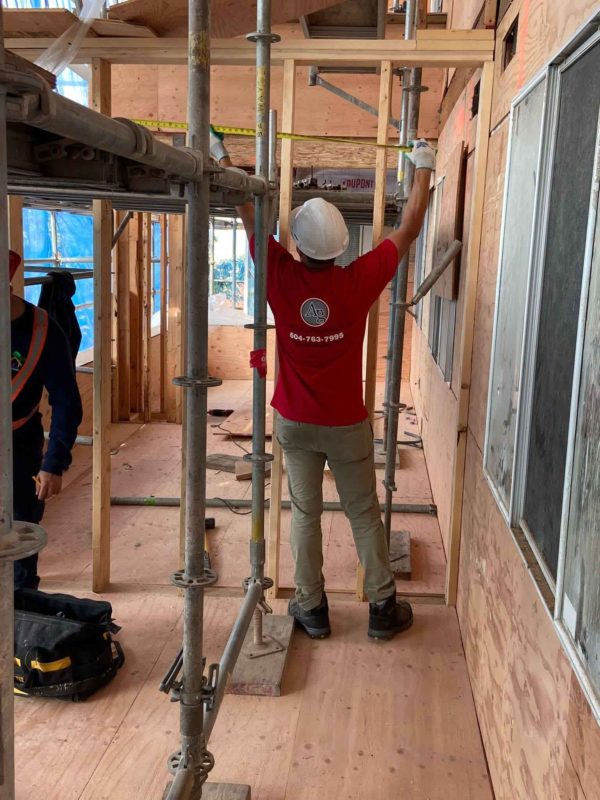
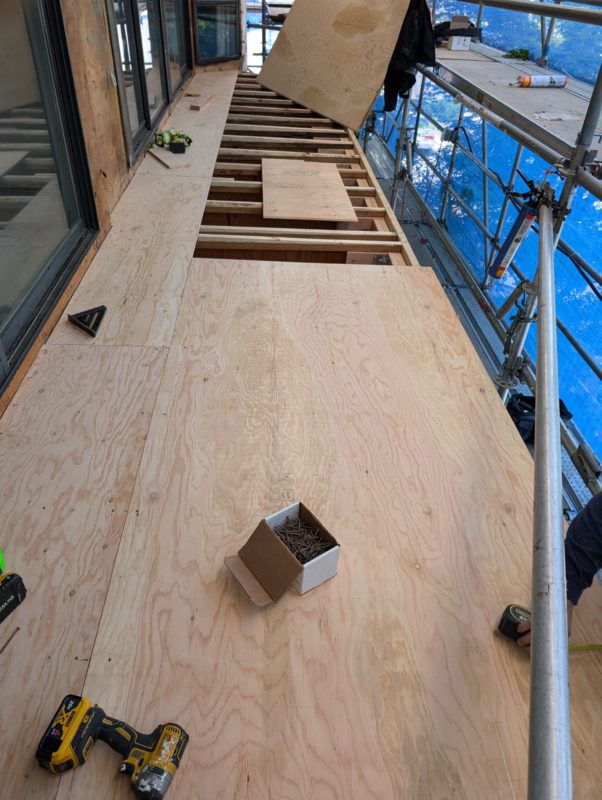
Sheathing Installation:
Sheathing is an essential part of the framing process, providing added strength and protection to the newly framed areas. Once the frame is in place, sheathing panels are applied to the exterior to create a solid barrier against weather and external elements. This layer also helps to improve the building’s insulation and contributes to overall structural stability. Proper installation of sheathing is crucial for ensuring the durability and effectiveness of the restoration.
Ensuring Long-Term Durability
Ventilation and Drainage:
Proper ventilation and drainage solutions are crucial for maintaining the health of your wood structures. Effective ventilation systems help to reduce moisture buildup within the building, which can otherwise lead to rot and other issues. Additionally, ensuring that drainage systems are in place and functioning properly directs water away from the foundation and prevents pooling around the wood. Integrating these solutions into the restoration process helps to create a dry and stable environment, promoting long-term durability.
To ensure long-term durability in the restoration process, our team applies protective measures, including specialized coatings that shield the new wood from future rot and decay. As shown in the accompanying image, proper drainage is crucial—notice the 2% slope indicated by the level, which helps direct water away from the structure, reducing moisture buildup.

Real-Life Case Study

To illustrate the restoration process in action, we’re showcasing a recent project where Argenta Restoration tackled a significant rot issue in a low-rise building. Our team started by marking the affected areas with different colors to clearly outline our approach. We used orange to indicate the wood that needed to be removed and replaced, ensuring that all compromised sections were addressed. Green markings were applied to areas where the wood wasn’t fully rotted but still required attention; these sections were treated with a specialized fungal treatment to prevent future decay.
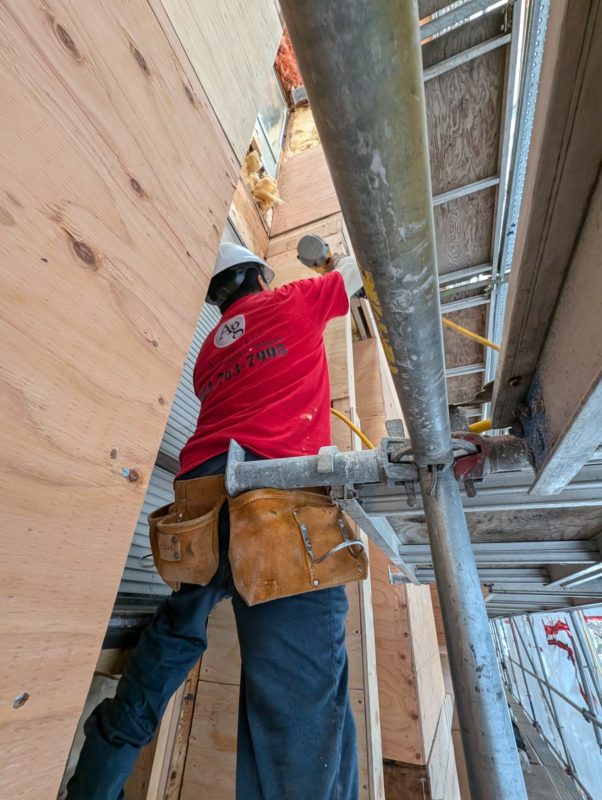
In summary, the restoration process is a meticulous yet essential journey to ensuring the long-term durability and safety of any building. From understanding the causes of wood rot and carefully removing the affected materials to preparing and executing precise framing work, each step plays a crucial role in restoring structural integrity. By incorporating protective measures and addressing ventilation and drainage, we can prevent future issues and maintain the health of your property for years to come.
If you suspect wood rot in your building, it’s vital to take action sooner rather than later. Ignoring the problem can lead to more extensive damage and costly repairs down the line. Don’t hesitate to seek professional help to assess and address any concerns.


